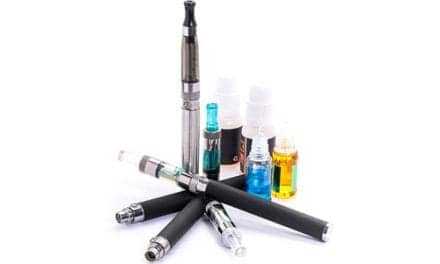According to data published by the Centers for Disease Control and Prevention (CDC) and the FDA’s Center for Tobacco Products (CTP), current e-cigarette use by middle and high school students has tripled from 2013 to 2014. The findings from the 2014 National Youth Tobacco Survey show that current e-cigarette use, which is at least 1 day in the past 30 days, among high school students increased from 4.5% in 2013 to 13.4% in 2014 from around 660,000 to 2 million students.
The findings of the survey also show that among middle school students, current e-cigarette use more than tripled from 1.1% in 2013 to 3.9% in 2014, which is an increase from approximately 120,000 to 450,000 students. A CDC news release notes that this is the first time since the survey started collecting data on e-cigarettes in 2011 that current e-cigarette use has surpassed current use of every other tobacco product overall, including conventional cigarettes.
Cigars were the most commonly used product among non-Hispanic blacks and e-cigarettes were the most used tobacco product for Hispanics, non-Hispanic whites, and non-Hispanic other race. In addition, hookah-smoking use roughly doubled for middle and high school students, while cigarette use declined among high school students and was unchanged for middle school students. Hookah use among high school students rose from 5.2% in 2013 to 9.4% in 2014, and current hookah use rose from 1.1% in 2013 to 2.5% in 2014 among middle school students.
Tom Frieden, MD, MPH, CDC director, states, “We want parents to know that nicotine is dangerous for kids at any age, whether it’s an e-cigarette, hookah, cigarette or cigar. Adolescence is a critical time for brain development. Nicotine exposure at a young age may cause lasting harm to brain development, promote addiction, and lead to sustained tobacco use.”
Mitch Zeller, JD, director of FDA’s Center for Tobacco Products, says, “In today’s rapidly evolving tobacco marketplace, the surge in youth use of novel products like e-cigarettes forces us to confront the reality that the progress we have made in reducing youth cigarette smoking rates is being threatened. These staggering increases in such a short time underscore why FDA intends to regulate these additional products to protect public health.”
Source: CDC










